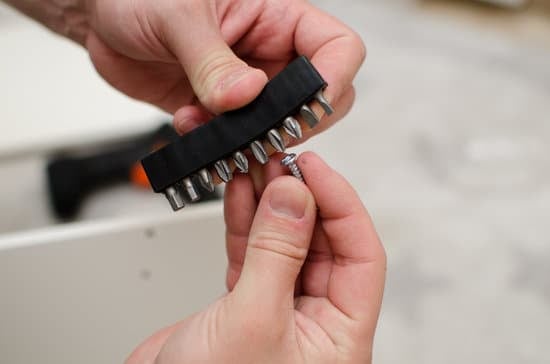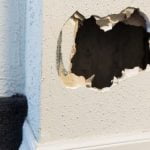Are you looking to improve your home’s BER rating and enhance its energy efficiency? The Building Energy Rating (BER) system is a crucial aspect that homeowners need to understand to make their homes more environmentally friendly and cost-effective. This article will guide you through the process of enhancing your home’s BER rating, ultimately leading to energy savings and a greener footprint.
The BER rating is a standardized metric used to assess the energy efficiency of buildings, providing valuable information on how efficiently a property uses energy. By understanding this system, homeowners can take steps to make their properties more environmentally sustainable and reduce their utility bills. Improving your home’s BER rating not only benefits the environment but also saves you money in the long run.
Factors such as insulation, heating systems, ventilation, and energy-efficient appliances all play a significant role in determining a home’s BER rating. By addressing these key factors, homeowners can make impactful changes that will improve their property’s energy efficiency. Conducting a thorough BER assessment is essential in identifying areas for improvement and implementing strategies to boost the overall rating of your home.
Importance of a High BER Rating
The BER (Building Energy Rating) system is a measure of the energy performance of a home, providing an indication of its energy efficiency. Understanding your home’s BER rating is crucial for homeowners who aim to reduce their energy consumption, lower utility bills, and contribute to environmental sustainability. By improving your home’s BER rating, you can make your living space more comfortable while also saving money in the long run.
One of the key benefits of having a high BER rating is increased energy efficiency. Homes with a higher BER rating typically have lower energy consumption, resulting in reduced greenhouse gas emissions and overall environmental impact. This means that by improving your home’s BER rating, you are not only benefiting yourself financially but also playing a role in promoting sustainable living practices.
Moreover, having a high BER rating can lead to significant cost savings for homeowners. Energy-efficient homes require less energy to heat and cool, resulting in lower monthly utility bills.
By implementing measures to improve your home’s BER rating, such as enhancing insulation, upgrading heating and cooling systems, and installing energy-efficient appliances, you can enjoy substantial savings on your energy costs over time. It’s essential for homeowners to prioritize improving their homes’ BER ratings to create a more sustainable and budget-friendly living environment.
| Benefits | Details |
|---|---|
| Increased Energy Efficiency | Homes with higher BER ratings have lower energy consumption. |
| Cost Savings | Energy-efficient homes result in reduced utility bills for homeowners. |
Common Factors Affecting BER Rating
Insulation
Insulation plays a crucial role in determining a home’s BER rating. Proper insulation helps in retaining heat within the property during colder months and keeping it cool during warmer months. Poor insulation leads to heat loss, which requires more energy consumption to maintain a comfortable indoor temperature. To improve your home’s BER rating, consider upgrading your insulation in areas like the attic, walls, floors, and windows. Adding insulation can significantly reduce heat loss and enhance energy efficiency.
Heating Systems
The type of heating system installed in your home has a direct impact on its BER rating. Older, inefficient heating systems tend to consume more energy as compared to newer, more energy-efficient models. Consider upgrading to a high-efficiency boiler or heat pump to improve your home’s BER rating.
Additionally, ensure that your heating system is properly maintained and serviced regularly for optimal performance. By investing in an energy-efficient heating system, you can lower your energy bills and increase your home’s overall energy efficiency.
Ventilation
Proper ventilation is essential for maintaining good indoor air quality and optimizing energy efficiency in your home. Inadequate ventilation can lead to moisture buildup, mold growth, and poor air circulation, all of which can negatively impact your home’s BER rating.
To improve ventilation and enhance your BER rating, consider installing mechanical ventilation systems like heat recovery ventilation (HRV) or demand-controlled ventilation (DCV). These systems help in reducing humidity levels, preventing condensation issues, and promoting a healthier living environment while boosting overall energy efficiency.
Conducting a BER Assessment
A Building Energy Rating (BER) assessment is a valuable tool for homeowners looking to improve the energy efficiency of their homes. It provides a rating that indicates how energy-efficient your property is and highlights areas where improvements can be made. Conducting a BER assessment involves a thorough examination of various factors that impact energy consumption in your home. Here is a step-by-step guide on how to conduct a home BER assessment and understand the results:
- Choose a Certified BER Assessor: The first step in conducting a BER assessment is to hire a certified assessor who will evaluate your property’s energy performance. Look for assessors who are registered with Sustainable Energy Authority of Ireland (SEAI) to ensure the validity of the assessment.
- Initial Inspection: The assessor will visit your property and conduct an initial inspection, taking note of key components such as insulation, windows, heating systems, and ventilation. They may also ask questions about your energy usage habits to get a better understanding of how you use energy in your home.
- Energy Performance Testing: During the assessment, the assessor will perform various tests to determine the energy performance of your home. This may include a blower door test to measure air leakage, thermal imaging to identify heat loss areas, and checking heating system efficiency.
Understanding the results of your BER assessment is crucial for making informed decisions on how to improve your home’s energy efficiency. The assessor will provide you with a BER certificate that includes recommendations for enhancing your property’s rating. By following these recommendations and implementing energy-saving measures, you can effectively improve your home’s BER rating and reduce energy costs in the long run.
Remember that small changes can make a big difference when it comes to increasing your home’s energy efficiency. From upgrading insulation and heating systems to installing energy-efficient appliances, there are plenty of ways to enhance your BER rating. By conducting regular assessments and taking proactive steps towards sustainability, you can create a more environmentally friendly and cost-effective living space for yourself and future generations.
Improving Home Insulation
Improving the insulation of your home is a crucial step in enhancing its BER Rating, which ultimately leads to greater energy efficiency and cost savings. One effective way to improve your home’s insulation is by ensuring that your walls, attic, and floors are properly insulated. Adding insulation to these areas can help prevent heat loss during the colder months and keep your home cooler in the summer, resulting in a more comfortable living space year-round.
Another strategy to improve home insulation and boost your BER Rating is by sealing any gaps or cracks around windows, doors, and other openings where air leakage could occur. By properly sealing these areas with weather stripping or caulking, you can reduce drafts and maintain a consistent indoor temperature without overworking your heating or cooling systems. This simple yet effective technique not only improves energy efficiency but also helps reduce your utility bills over time.
In addition to basic insulation measures, upgrading to energy-efficient windows can also be beneficial in improving your home’s BER Rating. Energy-efficient windows are designed to minimize heat transfer, keeping warm air inside during winter and preventing unwanted heat from entering during summer. By investing in high-performance windows, you can further enhance the energy efficiency of your home and contribute to a higher BER Rating overall.
| Key Points | Details |
|---|---|
| Insulating Walls, Attic, Floors | Proper insulation in key areas reduces heat loss and maintains comfort. |
| Sealing Gaps & Cracks | Preventing air leakage through proper sealing increases energy efficiency. |
| Upgrading to Energy-Efficient Windows | High-performance windows help minimize heat transfer for improved energy savings. |
Upgrading Heating and Cooling Systems
When it comes to improving the BER rating of your home, upgrading heating and cooling systems can have a significant impact on energy efficiency and overall cost savings. By optimizing these systems, homeowners can ensure that their homes are not only comfortable but also environmentally friendly. Here are some recommendations for upgrading heating and cooling systems to make them more energy-efficient:
- Consider replacing older, inefficient units with newer models that have higher energy efficiency ratings. Look for systems that are ENERGY STAR certified, as they meet strict energy efficiency guidelines set by the Environmental Protection Agency.
- Invest in programmable thermostats to better control the temperature in your home and reduce energy waste. These thermostats allow you to set specific schedules for heating and cooling, ensuring that you’re not using more energy than needed.
- Regular maintenance of heating and cooling systems is essential to ensure they are operating efficiently. This includes cleaning or replacing filters, checking for leaks or blockages, and making any necessary repairs promptly.
Upgrading your heating and cooling systems is a key step in improving your home’s BER rating and reducing your carbon footprint. Not only will these upgrades benefit the environment, but they will also lead to long-term savings on your energy bills. By following these recommendations and investing in energy-efficient systems, you can create a more sustainable home while enjoying enhanced comfort throughout the year.
- Consult with HVAC professionals to assess your current heating and cooling systems and determine the most efficient upgrades for your home.
- Look into renewable energy options such as geothermal heat pumps or solar panels to further increase the efficiency of your heating and cooling systems.
- Educate yourself on proper usage of heating and cooling systems to maximize efficiency, such as setting appropriate temperatures based on occupancy levels or weather conditions.
Installing Energy-Efficient Appliances
When it comes to improving your home’s BER rating, one key factor to consider is installing energy-efficient appliances. Energy-efficient appliances can help reduce the overall energy consumption of your home, which can have a positive impact on your BER rating. Not only do these appliances help lower your carbon footprint, but they also contribute to cost savings in the long run.
Benefits of Energy-Efficient Appliances
Energy-efficient appliances are designed to use less energy while still providing the same level of performance as traditional appliances. By replacing old, inefficient appliances with newer models that have high energy efficiency ratings, you can significantly improve your home’s BER rating. These appliances not only help reduce greenhouse gas emissions but also lower your utility bills over time.
Choosing the Right Energy-Efficient Appliances
When selecting energy-efficient appliances for your home, look for products that have earned the ENERGY STAR label. ENERGY STAR-certified appliances meet strict energy efficiency guidelines set by the U.S. Environmental Protection Agency and Department of Energy. These appliances are independently certified to save energy without sacrificing features or functionality. From refrigerators and dishwashers to washing machines and air conditioners, there are plenty of options available to help boost your home’s BER rating through efficient appliance choices.
Other Ways to Improve BER Rating
In conclusion, to improve your home’s BER Rating, it is crucial to focus on various strategies beyond just insulation and heating upgrades. Sealing drafts, utilizing smart home technology, and integrating renewable energy options can all play a significant role in increasing the energy efficiency of your property. By addressing these additional factors, homeowners can make further strides towards achieving a higher BER Rating and reaping the associated benefits in terms of cost savings and environmental sustainability.
Sealing drafts is a simple yet effective way to enhance the energy efficiency of your home. By identifying and sealing any sources of air leakage, such as gaps around windows and doors, homeowners can prevent heat loss and reduce their energy consumption.
Additionally, investing in smart home technology can provide convenient ways to monitor and control energy usage, ultimately leading to more efficient household operations. From programmable thermostats to smart lighting systems, these technologies offer valuable tools for improving your BER Rating.
Furthermore, exploring renewable energy options like solar panels or geothermal heating can significantly boost your home’s BER Rating by generating clean and sustainable power. Not only do these solutions reduce reliance on traditional energy sources, but they also contribute to lowering carbon emissions.
By combining these alternative energy sources with other efficiency improvements, homeowners can create a more eco-friendly living space while simultaneously enhancing their property’s value. Overall, taking a comprehensive approach to improving your home’s BER Rating will not only result in long-term cost savings but also contribute positively to a greener future for all.
Frequently Asked Questions
Can You Improve Your BER Rating?
Improving your BER rating can be achieved through various measures such as upgrading insulation, installing energy-efficient heating systems, using energy-saving lighting, and sealing any drafts. Undertaking an energy audit can also pinpoint areas for improvement.
How Do I Get a B3 BER Rating?
To achieve a B3 BER rating, you would need to implement energy-saving measures in your property. This could include improving insulation, upgrading heating systems, using renewable energy sources, and enhancing overall energy efficiency. Consult with a BER assessor for specific recommendations.
What Is a Bad BER Rating?
A bad BER rating typically falls below a C3 grade on the scale. This indicates that the building is not performing well in terms of energy efficiency and is likely consuming more energy than necessary. Improvements are needed to enhance the building’s performance and reduce its environmental impact.

I’m thrilled to have you here as a part of the Remodeling Top community. This is where my journey as an architect and remodeling enthusiast intersects with your passion for transforming houses into dream homes.





